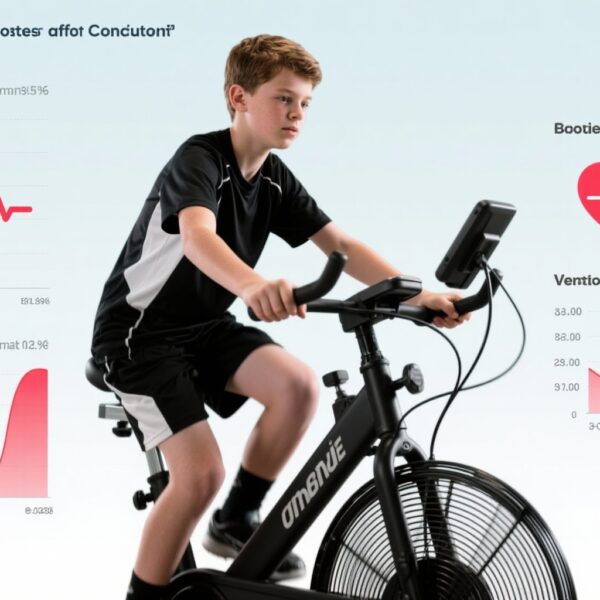Highlight
– In 917 Boston Marathon registrants, greater habitual weekly running distance and higher counts of quality (hard) sessions were associated with faster race times.
– Increased cross-training in the final 4 months pre-race correlated with better performance.
– Athletes who reduced training session frequency in the 4 months before the race (versus those who maintained or increased it) had faster times — suggesting a benefit to relative frequency reduction while preserving training exposure.
Background
Endurance running performance is shaped by the accumulated stimulus of training volume, the distribution of intensity, and recovery strategies implemented in the weeks and months before competition. Coaches and athletes manipulate several dimensions: weekly distance (volume), number of sessions (frequency), intensity mix (steady-state vs threshold vs intervals), and cross-training. Classic training theory stresses progressive overload to build physiological capacity, then a taper or planned reduction to allow supercompensation and optimize performance. However, the optimal combination and timing of these elements for recreational and competitive marathoners remain debated, and much contemporary guidance is derived from small cohorts, elite samples, or controlled trials of short-term taper strategies. Large observational studies from real-world race fields can identify patterns associated with successful outcomes and suggest hypotheses for individualized training planning.
Study design
The reported analysis (DeJong Lempke et al.) surveyed adult registrants for the 2022 Boston Marathon approximately one month before race day. Respondents (n = 917) provided demographic details, self-reported training history, weekly running distance and session counts, counts of quality (hard) sessions, and cross-training exposure across two pre-race windows: 12–4 months and 4–0 months before the race. Training frequency changes (TFCs) were calculated by comparing these two timeframes. Official race results (chip times) were linked to the survey data. Separate linear regression models assessed associations between training measures (in each window), cross-training, and TFCs with race performance, adjusting for age, sex, prior racing experience and other demographic covariates.
Key findings
Population characteristics and primary outcomes
The cohort included 917 athletes (495 female, 422 male). Mean race times were 3:53 ± 0:37 h for females and 3:35 ± 0:39 h for males. Mean reported weekly running distances were 64.4 ± 24.0 km for females and 67.6 ± 26.2 km for males.
Associations with training exposure
Across both pre-race windows (12–4 months and 4–0 months), higher habitual running distance per week, greater number of running sessions per week, and more quality (hard) sessions per week were each associated with faster marathon times (statistical significance reported at p ≤ 0.050). These effects persisted after adjusting for demographic factors and racing experience, suggesting that both accumulated volume and higher-intensity stimulus contribute independently to marathon performance in a community-based sample.
Cross-training and late pre-race exposure
Greater cross-training during the final 4 months before the race was strongly associated with faster finish times (p < 0.001). This finding suggests that well-timed cross-training — perhaps as a strategy to preserve aerobic stimulus while reducing impact and injury risk — may accompany better performance in real-world marathon preparation.
Training frequency changes (TFCs)
When comparing the earlier (12–4 months) and later (4–0 months) pre-race periods, athletes who reported decreased running sessions per week (a reduction in frequency) in the 4 months immediately before the race were faster than those who maintained or increased session frequency (p = 0.035). Notably, this benefit came in the context of athletes who nonetheless had higher habitual exposure over the earlier months; the pattern observed is not simply low overall training but rather a profile of higher baseline load followed by a relative reduction in session frequency in the later months.
Interpretation of effect sizes and clinical significance
The authors report statistically significant associations across multiple training variables; exact beta coefficients and confidence intervals are provided in the primary article. Clinically, the results reinforce established coaching principles that a high base of training (volume and quality) supports faster marathon performance. A novel element is the association between reduced session frequency in the 4 months pre-race and improved outcomes, which may reflect intentional consolidation of training (fewer but possibly longer or higher-quality sessions), early phase tapering, or strategic recovery to lower injury and illness risk while preserving fitness.
Expert commentary and mechanistic insights
How can reduced frequency but maintained or high volume improve performance? There are several plausible mechanisms. First, decreasing session frequency can increase recovery opportunities and reduce cumulative neuromuscular fatigue, allowing higher quality work in the remaining sessions and minimizing maladaptation. Second, some athletes may maintain weekly distance while reducing session count by combining kilometers into fewer, longer runs; that structure could enhance endurance-specific adaptations such as mitochondrial density and substrate utilization. Third, increased cross-training in the later preparatory phase can maintain cardiovascular stimulus without additional impact load, lowering risk of overuse injury and permitting continuity in training.
Relation to tapering literature
Classic taper studies indicate that a short-term reduction in training load (often 1–3 weeks) before competition improves performance via recovery and supercompensation (Mujika & Padilla). The present observational finding of reduced session frequency across a broader 4-month window should not be construed as contradicting controlled taper studies; rather, it highlights that the preparatory period includes progressive phases: a long-term accumulation phase and later consolidation and relative unloading that may begin well before the final weeks. The optimal timing and magnitude of frequency reduction likely depend on athlete experience, injury history, and objective markers of fatigue.
Limitations and generalizability
This is an observational study with self-reported training data, which introduces potential recall bias and measurement error. The cohort consisted of Boston Marathon registrants who chose to respond — a selected sample that may not generalize to all marathoners or to elite athletes. While analyses adjusted for several covariates, residual confounding is possible (for example, unmeasured differences in intensity distribution, sleep, nutrition, or injury status). The operationalization of ‘quality’ sessions was based on participant report and may vary between athletes. Causal inference is limited: reduced frequency could be a deliberate strategy used by fitter athletes, or it could be an outcome of non-training factors that independently relate to performance.
Clinical and coaching implications
For clinicians advising recreational and competitive runners, key practical messages are:
- Encourage development of a higher habitual training base (volume and regular quality sessions) across the months leading into marathon training — this is consistently associated with better race performance.
- Consider structured consolidation of training in the later months: reducing the number of training days while preserving key sessions or overall distance may enhance recovery and session quality.
- Incorporate cross-training strategically in late preparation to maintain cardiovascular stimulus while reducing impact load for athletes at risk of overuse injury.
- Individualize plans: the observed associations are population-level signals and should be adapted based on athlete age, training history, injury risk, and response to load.
Conclusion
The study by DeJong Lempke et al. provides real-world evidence from a large field of Boston Marathon runners that both higher habitual training exposure (distance and quality sessions) and a relative reduction in training frequency during the 4 months before the race are associated with faster marathon performance. These results align with the concept that a strong base plus timely reductions to promote recovery — possibly combined with judicious cross-training — supports peak endurance performance. Prospective and interventional studies that precisely quantify intensity distribution, objective load (e.g., GPS/HR data), and markers of recovery will be important to refine recommendations for individualized marathon preparation.
Funding and trial registration
Funding and clinical trial registration were not detailed in the summary provided. Readers should consult the original publication for full disclosures: DeJong Lempke AF et al., Sports Med. 2025.
References
1. DeJong Lempke AF, Ackerman KE, Stellingwerff T, Burke LM, Baggish AL, d’Hemecourt PA, Dyer S, Troyanos C, Saville GH, Adelzadeh K, Holtzman B, Hackney AC, Whitney KE. Training Volume and Training Frequency Changes Associated with Boston Marathon Race Performance. Sports Med. 2025 Sep 6. doi: 10.1007/s40279-025-02304-4. PMID: 40913707; PMCID: PMC12441744.
2. Mujika I, Padilla S. Scientific bases for precompetition tapering strategies. Sports Med. 2003;33(7):493–512. (Review of physiological rationale and empirical data on tapering).
3. Seiler S, Kjerland GO. Quantifying training intensity distribution in elite endurance athletes: is there evidence for an “optimal” distribution? Int J Sports Physiol Perform. 2006;1(3):206–220.
4. Billat LV. Interval training for performance: a scientific and empirical practice. Sports Med. 2001;31(1):13–31. (Discussion of high-intensity interval training and physiological bases).
AI image prompt for thumbnail
A crisp, high-resolution image of marathon runners training at sunrise along a coastal road: a mix of long steady runners and a few athletes doing interval repeats on a nearby track; subtle infographic overlays depict weekly mileage bars descending slightly in the final weeks and a calendar highlighting a 4-month window; color palette is cool blues and warm sunrise oranges, conveying effort, planning, and strategic reduction.



